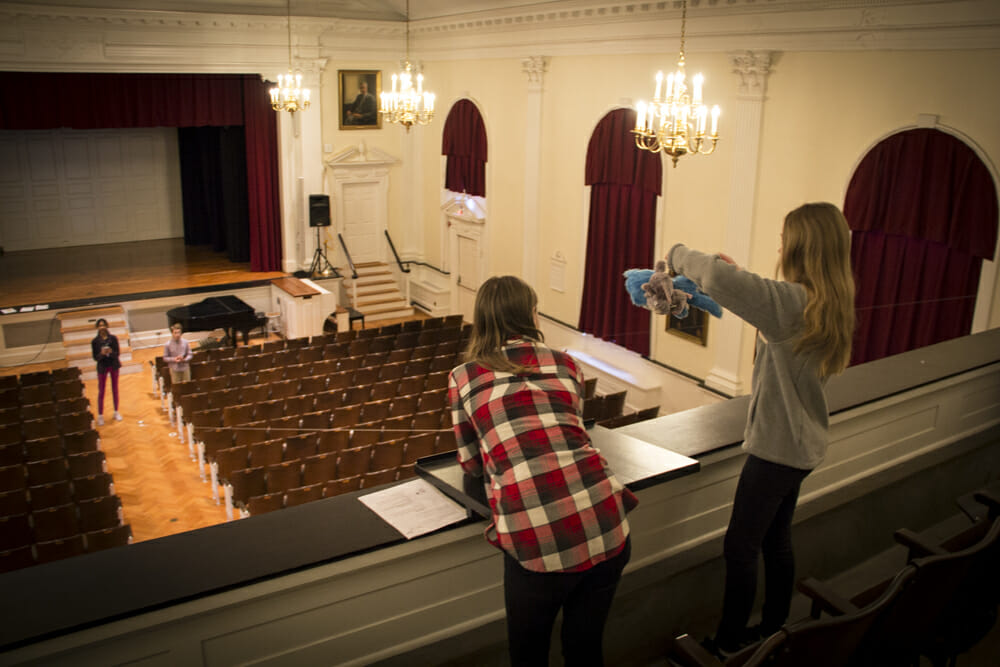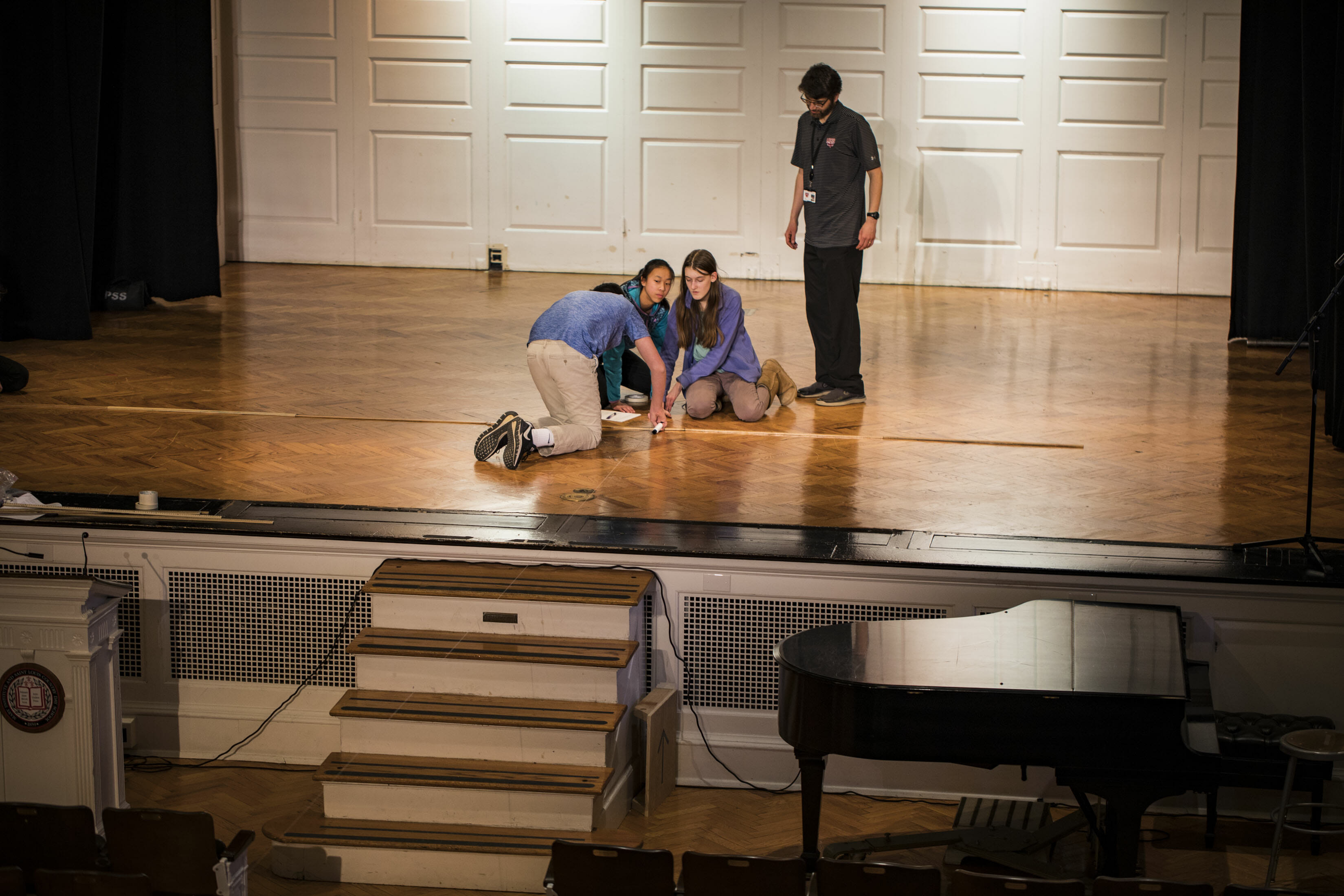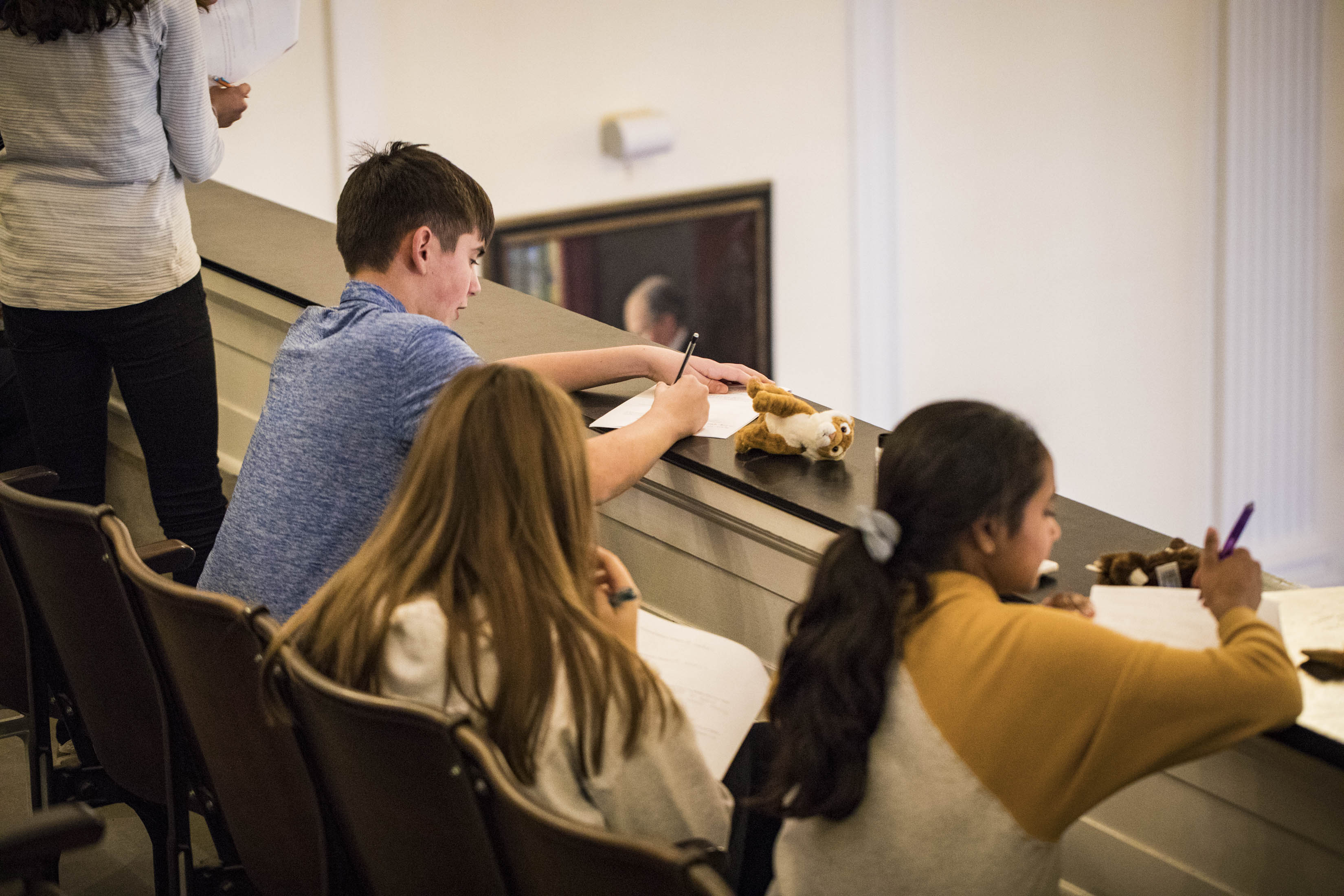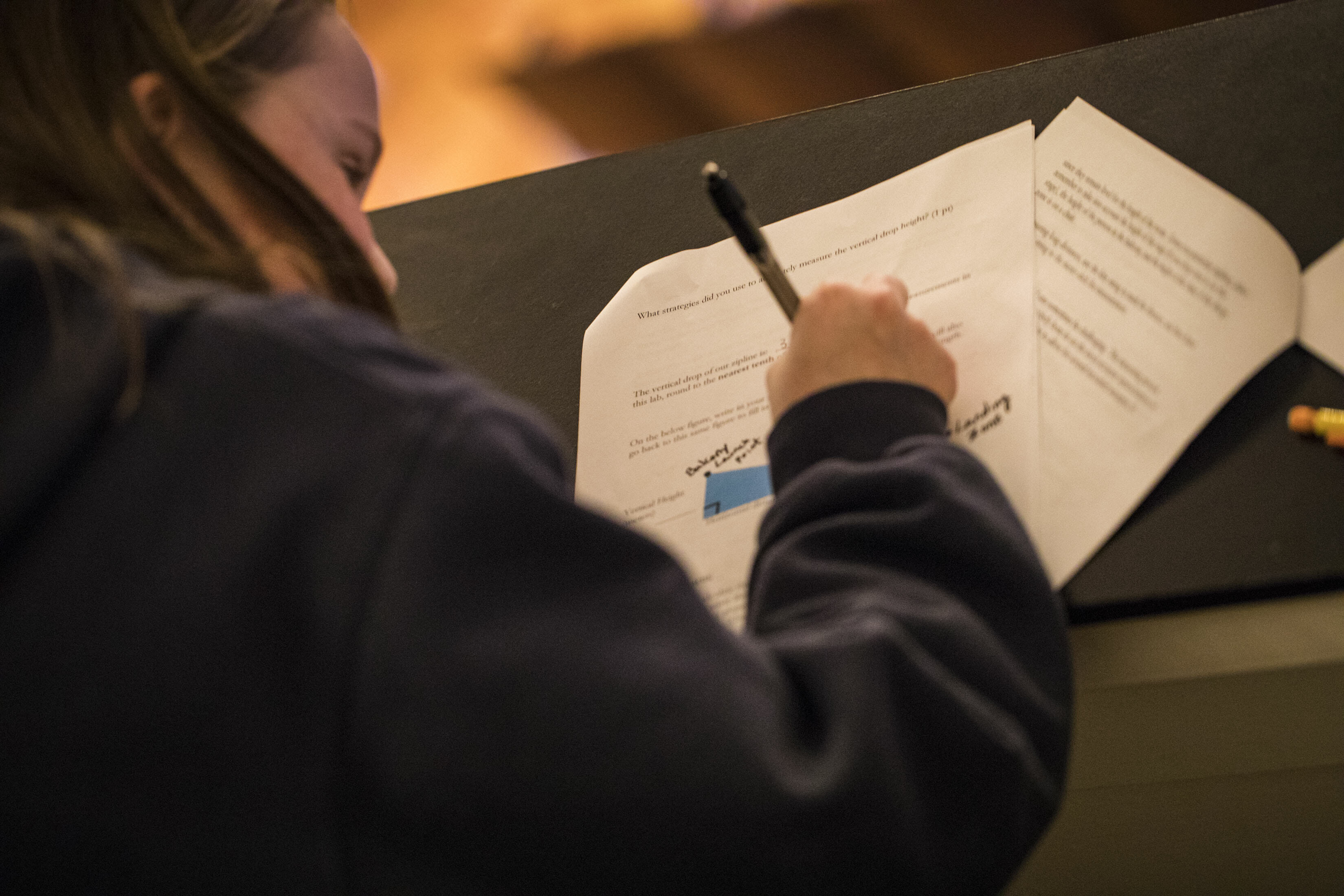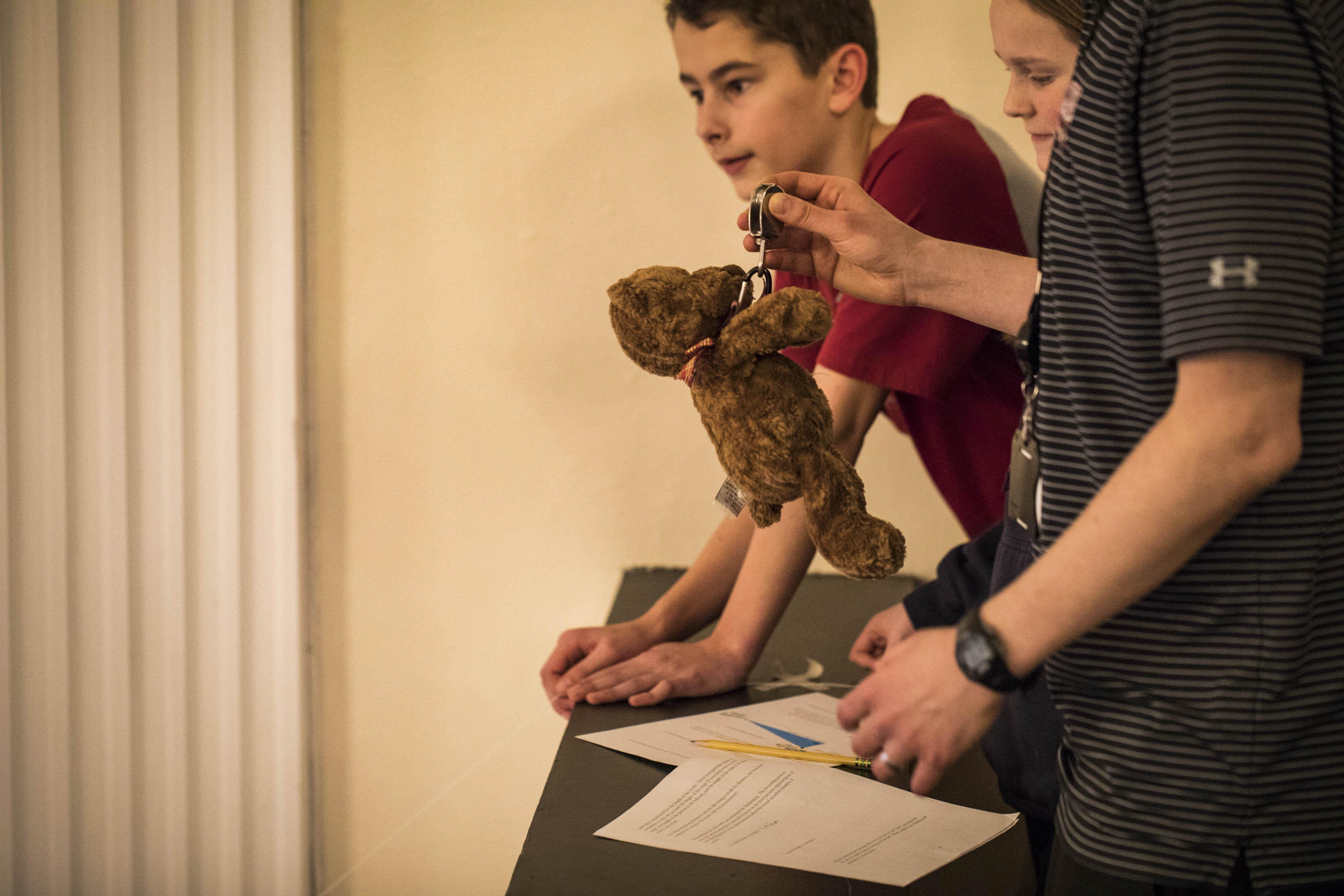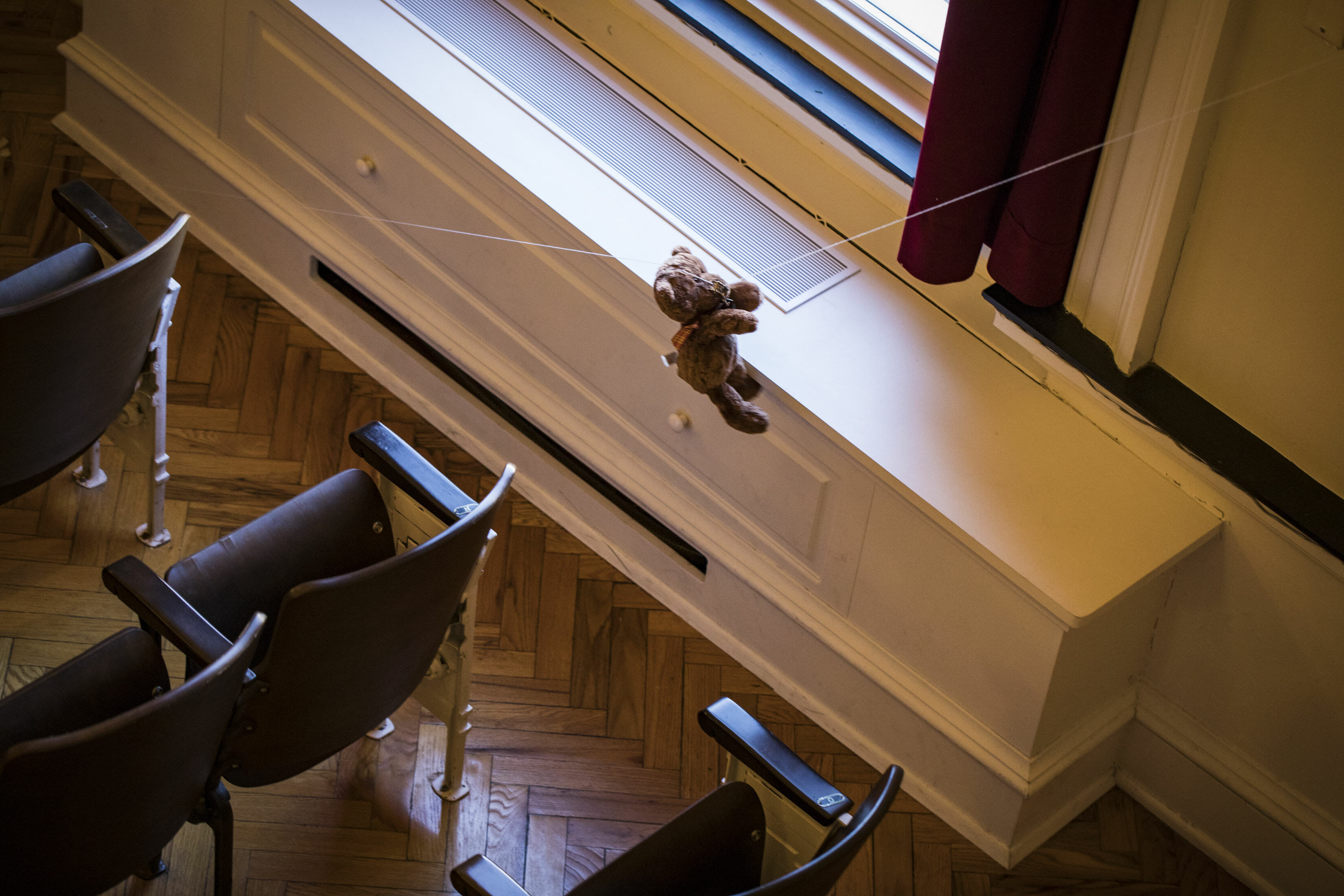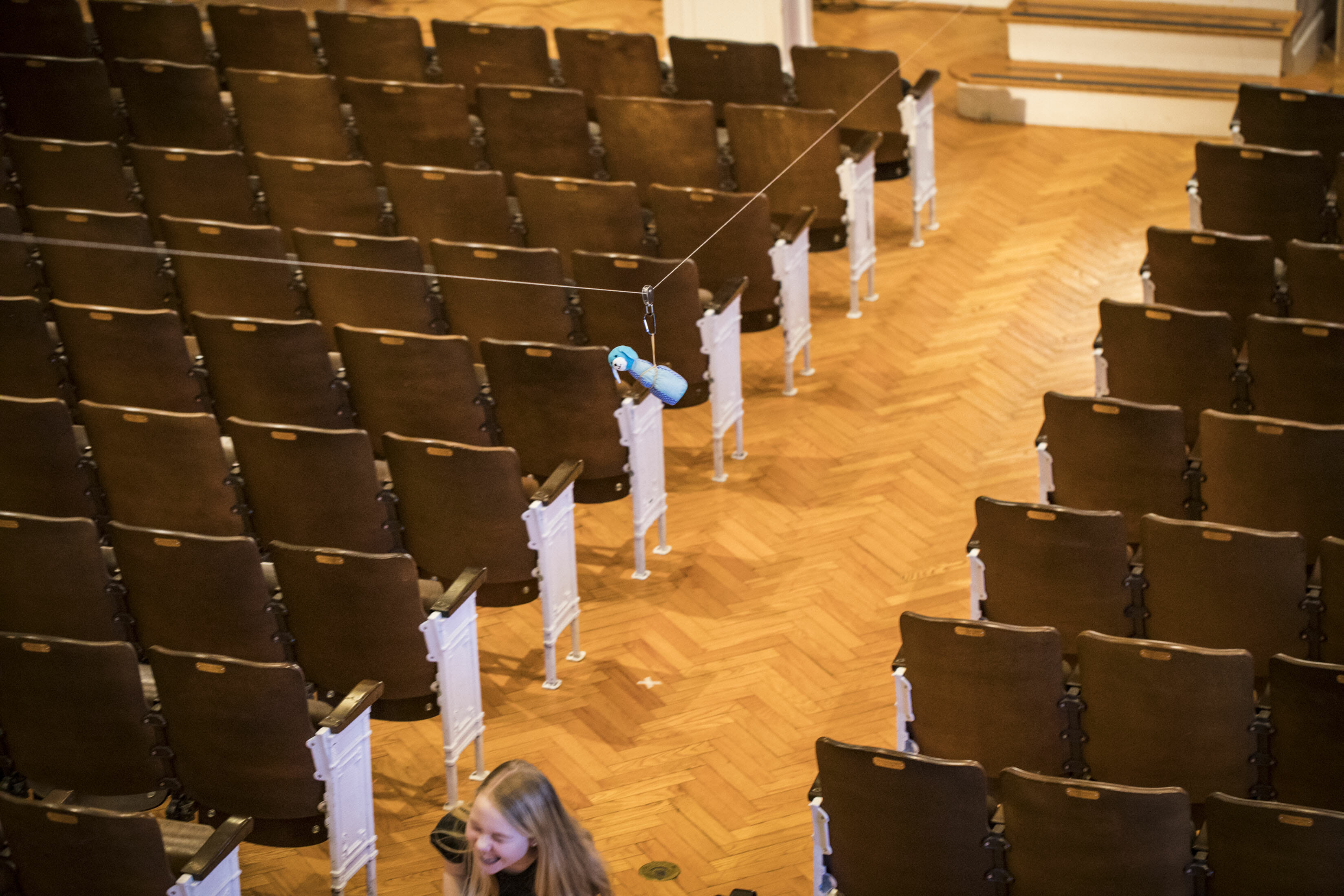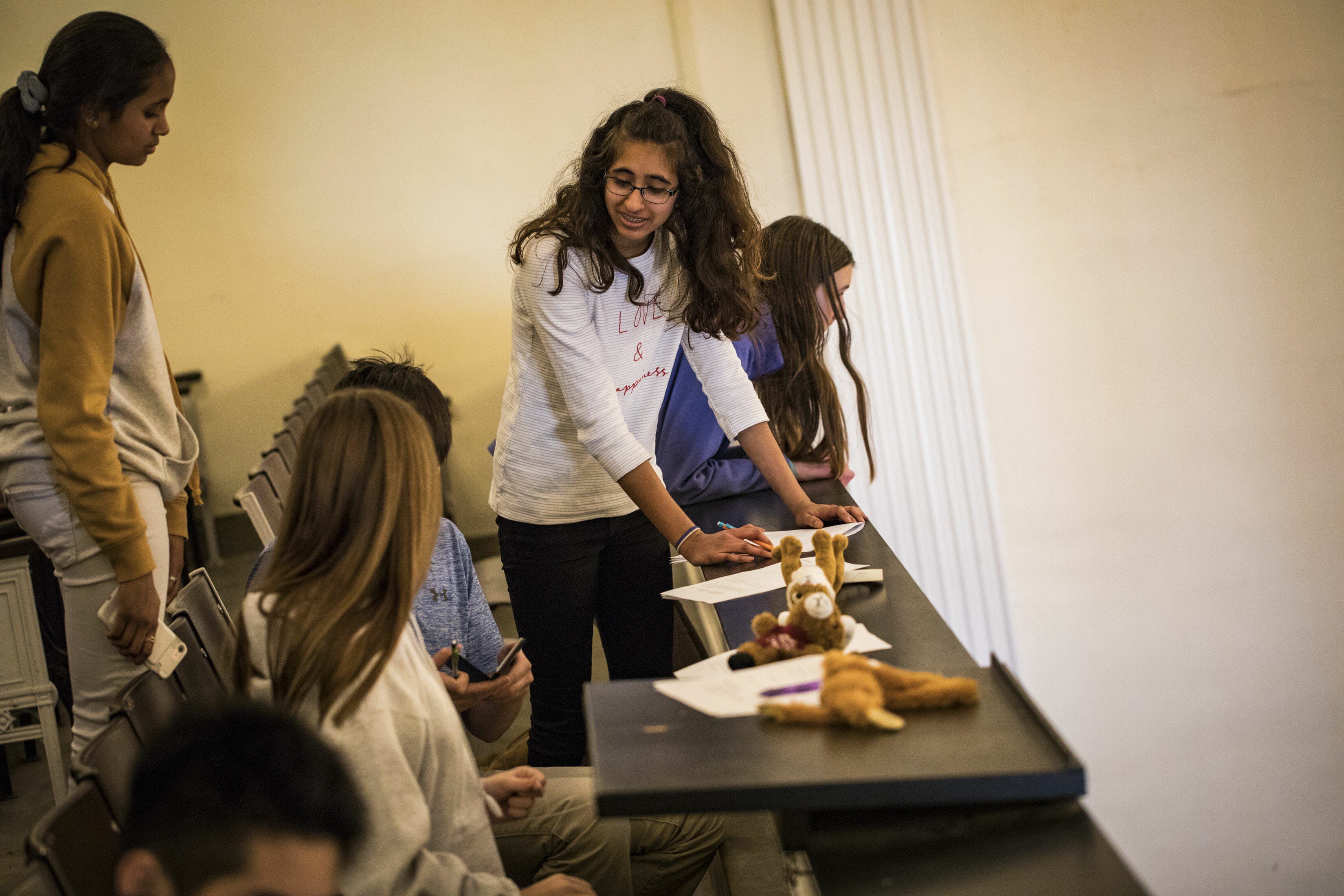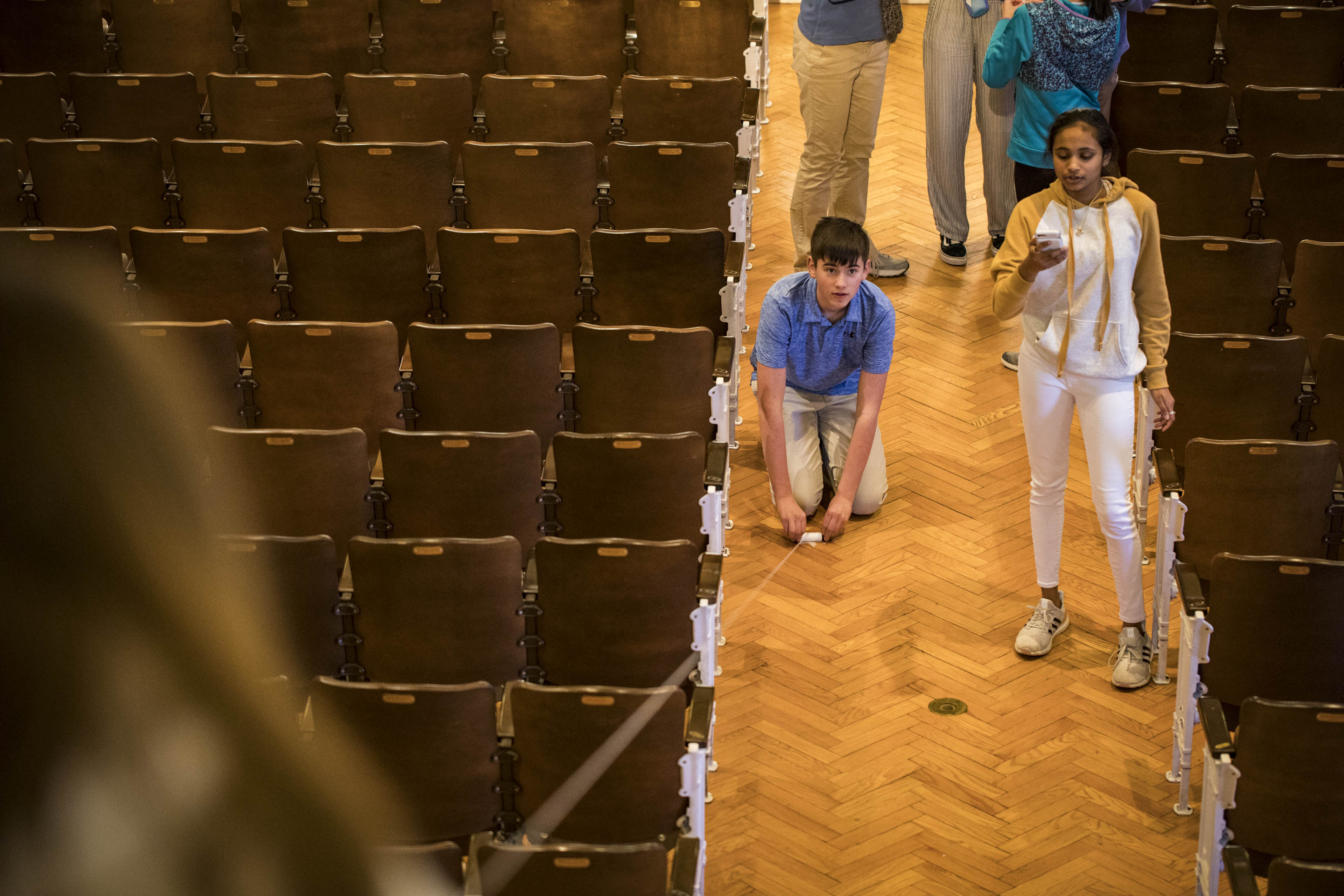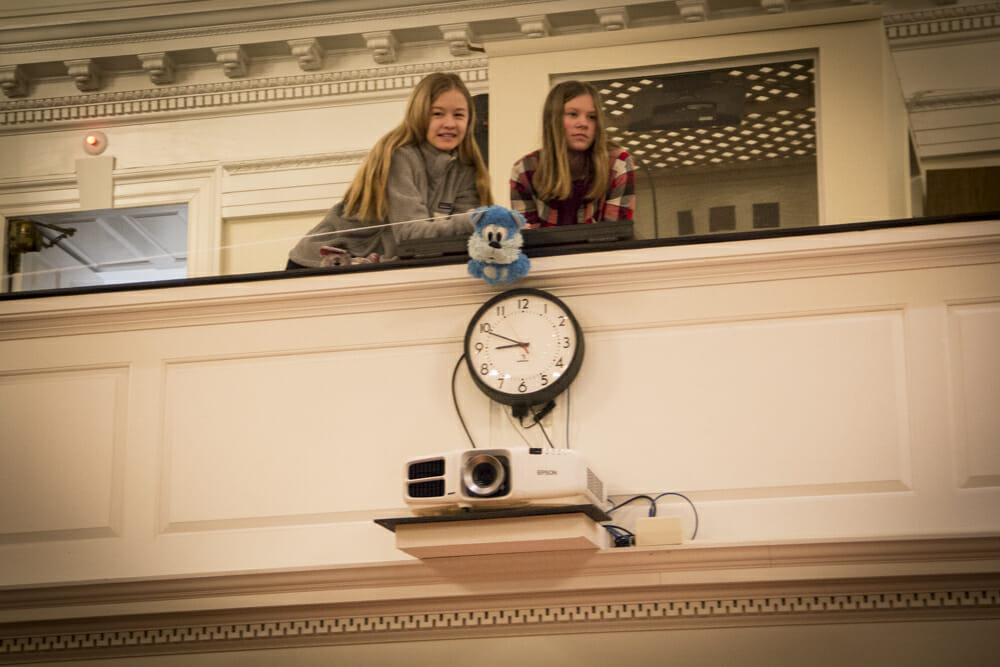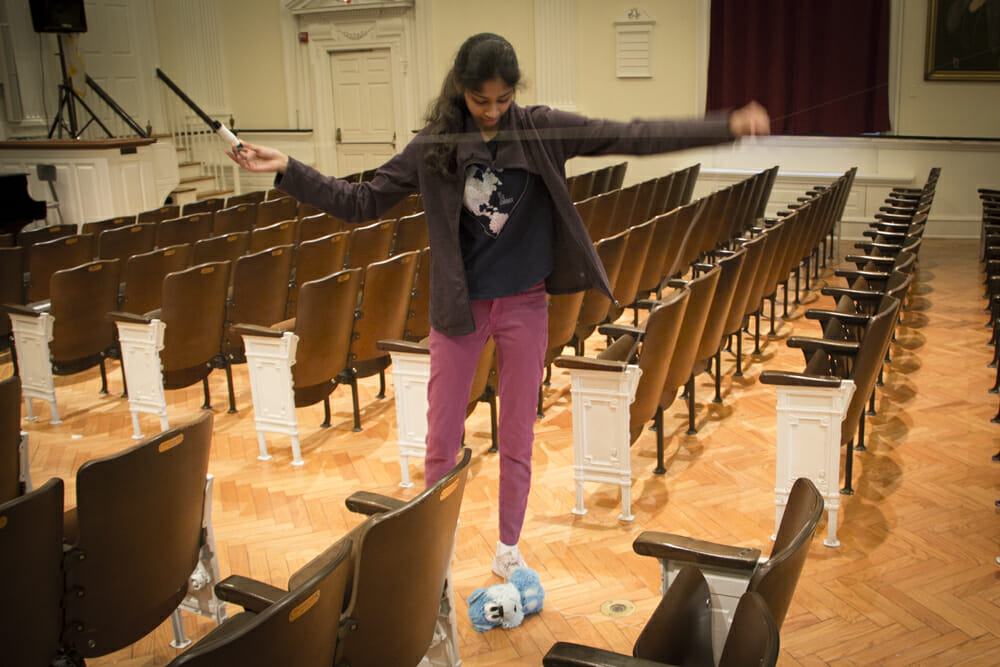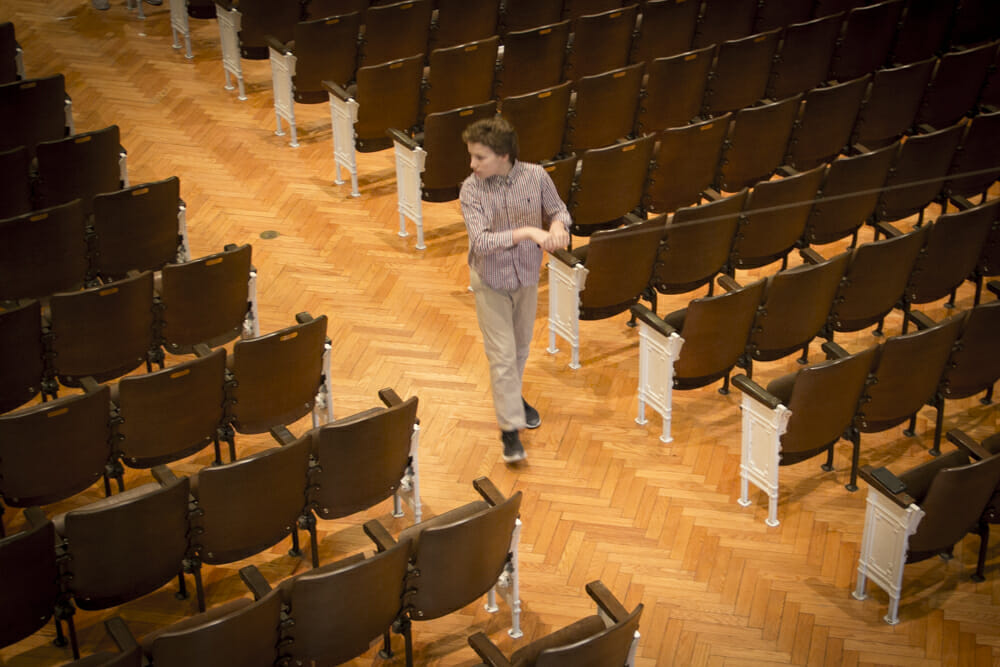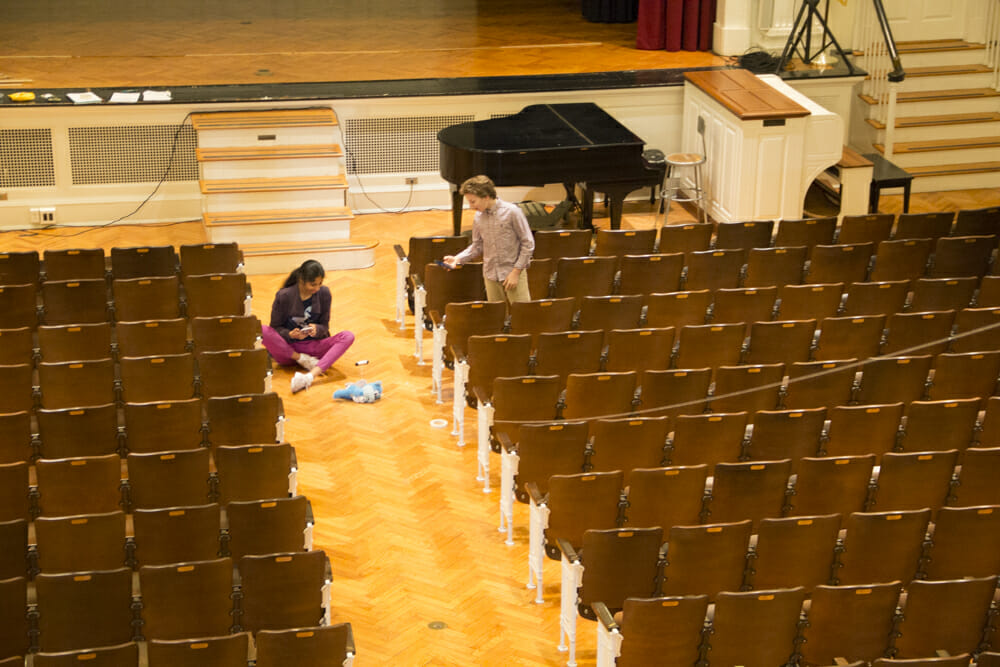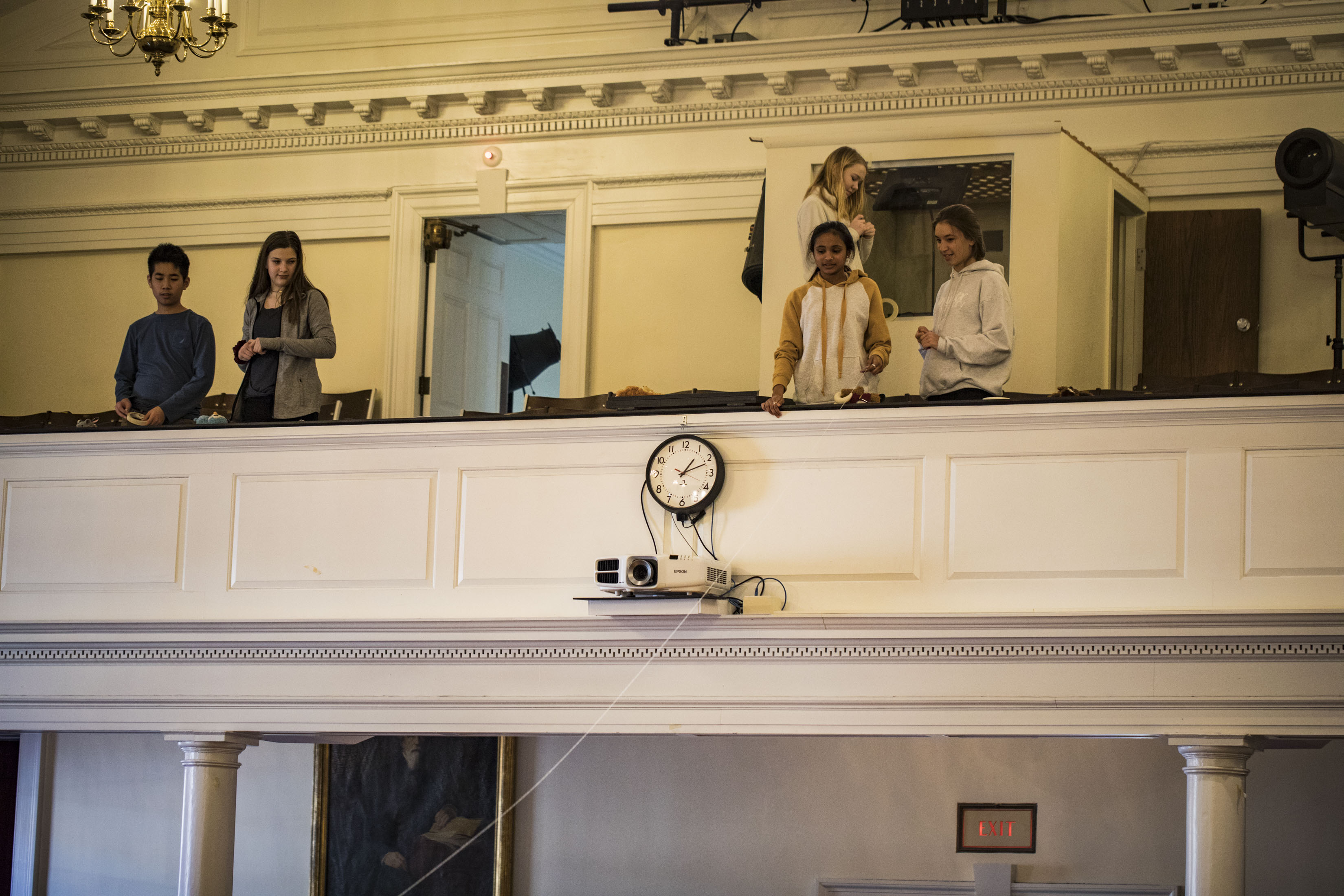Eighth grade math students studying the Pythagorean Theorem moved theory to reality in Mary Eliot Chapel this week.
A refresher: the theorem is named after an ancient Greek mathematician and states that for a right triangle, the square of the hypotenuse (the side opposite the right angle) is equal to the sum of the squares of the other two sides. The equation might be familiar: a2 + b2 = c2.
In order to experience the information through a real-life scenario, students created ziplines to represent the hypotenuse of an enormous right triangle. They measured the vertical height from the Eliot Chapel balcony by rolling a spool of string straight down to the floor to serve as one of the sides of the triangle. Students walked a click-wheel (borrowed from the athletic department) to measure the horizontal side’s distance from drop point to the landing zone. The students then calculated the length of the hypotenuse (zipline) using the two measured triangle legs. They used kite string for the zipline, along with mini-carabiners and pulleys to secure the rubberband harnesses. Students brought their bravest stuffed animals to be launched. They also calculated the zipline’s slope and recorded the flight time to determine the toy’s average speed from takeoff to touchdown.
The goal of the lab was to demonstrate the modeling power of linear equations and the Pythagorean Theorem in a hands-on approach. Students took away the notion that real-life scenarios are built on math and that engineering uses the skills that we learn in the classroom. The lab also provided students the opportunity to employ teamwork and problem solving to figure out how to measure on large scales. They also analyzed the field data that they captured, and reflected on how measurement errors and reporting inaccuracies could affect the design of a project.
Middle School Math Teacher Lev Guter said, “I am always impressed by the creativity students show in tackling challenging problems in new ways. They rise to the occasion and come up with new ideas and perspectives to arrive at solutions. The variety of ziplines the teams produced, and the different measurement techniques they used shows that imagination, perseverance and fun are all ingredients in a productive experience.”
